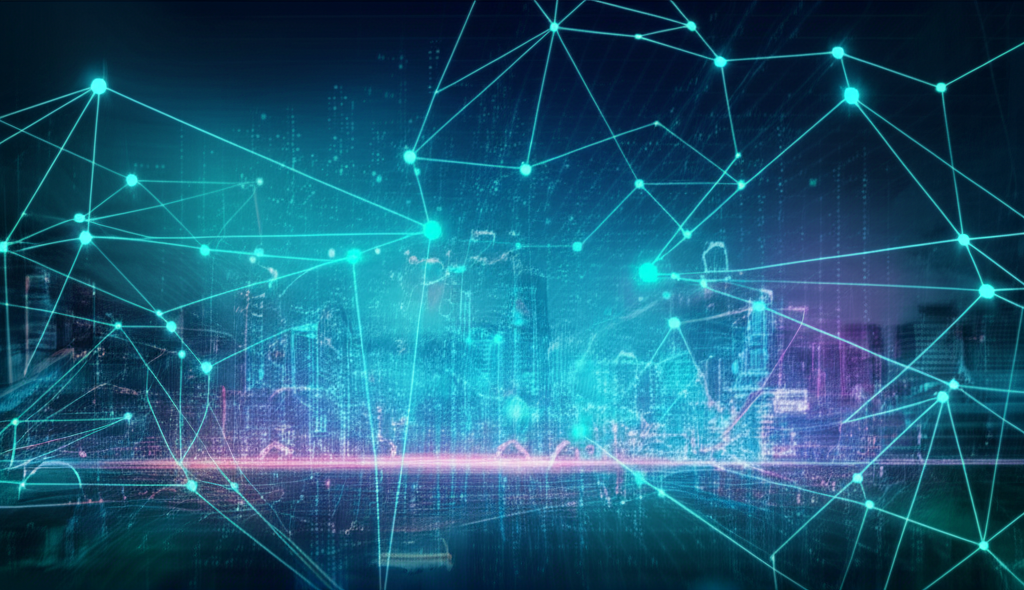Subtitle: Exploring the Symbiotic Relationship Driving the Future of Digital Technologies
Introduction: The digital landscape is undergoing a profound transformation, with Web3 laying the groundwork for a decentralized internet and Artificial Intelligence (AI) reshaping how we interact with data and systems. Increasingly, these two powerful paradigms are converging, promising to unlock unprecedented levels of innovation, efficiency, and intelligence within the decentralized ecosystem. This synergy is not merely theoretical; it’s actively driving a new era of digital possibilities.
The Foundation of Convergence
The integration of AI into the core infrastructure of blockchain and Web3 is laying a crucial foundation for more robust and intelligent decentralized systems. AI algorithms are beginning to play a vital role in optimizing various aspects of blockchain networks, from improving the efficiency of consensus mechanisms to enhancing network scalability. For instance, machine learning can analyze network traffic patterns and predict potential bottlenecks, allowing for dynamic adjustments that maintain network performance. Furthermore, AI is proving instrumental in automating and improving the auditing of smart contracts, identifying vulnerabilities and potential exploits far more efficiently than manual processes, thereby significantly bolstering the security and reliability of decentralized applications before deployment. This foundational AI layer ensures that the underlying Web3 architecture is not only secure but also adaptive and self-optimizing, paving the way for more complex and intelligent decentralized applications.
Enhancing Decentralized Applications (dApps)
Beyond infrastructure, AI is poised to revolutionize the functionality and user experience of decentralized applications (dApps). Imagine DeFi platforms that use AI to predict market volatility with greater accuracy, offering personalized investment strategies to users while maintaining decentralization. Non-fungible tokens (NFTs) can evolve from static digital assets into dynamic, AI-powered entities capable of interacting with their environment or even generating new content based on user engagement. AI can also personalize user interfaces within Web3 platforms, making the often-complex world of decentralized finance and digital ownership more intuitive and accessible to a broader audience. From intelligent recommendation engines on decentralized social media to AI-driven virtual assistants within metaverse environments, the potential for AI to enrich dApp utility and adoption is immense, fostering a more engaging and responsive decentralized web.
Security and Fraud Detection
One of the most critical areas where AI offers substantial value to Web3 is in enhancing security and detecting fraudulent activities. While blockchain’s inherent immutability provides a strong base, sophisticated attacks and vulnerabilities still exist. AI-powered analytics can monitor blockchain transactions in real-time, identifying anomalous patterns that might indicate illicit activities, such as money laundering, phishing attempts, or sophisticated smart contract exploits. Machine learning models can be trained on vast datasets of legitimate and malicious transactions to recognize new threats more rapidly than traditional rule-based systems. Moreover, AI can contribute to privacy-preserving technologies within Web3 by enabling secure multi-party computation or enhancing zero-knowledge proofs, further protecting user data while maintaining the integrity of decentralized networks. This proactive and adaptive security layer is essential for building trust and ensuring the long-term viability of the Web3 ecosystem.
AI-Powered Autonomous Agents and DAOs
The synergy between AI and Web3 extends into the realm of decentralized autonomous organizations (DAOs) and the emergence of autonomous AI agents. These agents, powered by AI, could operate within DAO frameworks, executing predefined tasks, managing resources, or even proposing and voting on governance decisions based on real-time data and predetermined objectives. This could lead to hyper-efficient DAOs capable of self-governance and self-improvement without constant human intervention. For example, an AI agent could manage a DAO’s treasury, optimize its yield farming strategies, or automate the distribution of funds based on community-approved proposals. While this presents significant opportunities for scalability and efficiency in decentralized governance, careful consideration must be given to the design and oversight of these AI agents to ensure they align with the DAO’s foundational principles and do not inadvertently introduce new forms of centralization or control.
Challenges and Ethical Considerations
Despite the immense potential, the convergence of AI and Web3 is not without its challenges and ethical considerations. A primary concern is the potential for AI to inadvertently introduce centralization into fundamentally decentralized systems, particularly if powerful AI models are controlled by a few entities or rely on centralized data sources. Issues of data bias, algorithmic transparency, and accountability also become paramount in a decentralized context. Ensuring that AI systems embedded within Web3 are auditable, fair, and truly enhance rather than undermine decentralization requires careful architectural design and governance models. Furthermore, the energy consumption of advanced AI models combined with blockchain’s existing energy footprint necessitates innovative solutions for sustainable development. Addressing these complex challenges through responsible innovation and robust ethical frameworks will be crucial for realizing the full, positive potential of AI-Web3 synergy.
Conclusion
The merging of Artificial Intelligence and Web3 represents a pivotal moment in the evolution of digital technology, promising to reshape everything from data management to decentralized governance. This powerful convergence holds the key to building more intelligent, secure, and user-centric applications on a truly decentralized internet. While significant technical and ethical hurdles remain, the ongoing innovation and collaborative efforts within both ecosystems are steadily paving the way for a future where AI and Web3 collectively empower users, enhance digital interactions, and unlock unprecedented possibilities for a more connected and equitable digital world.

